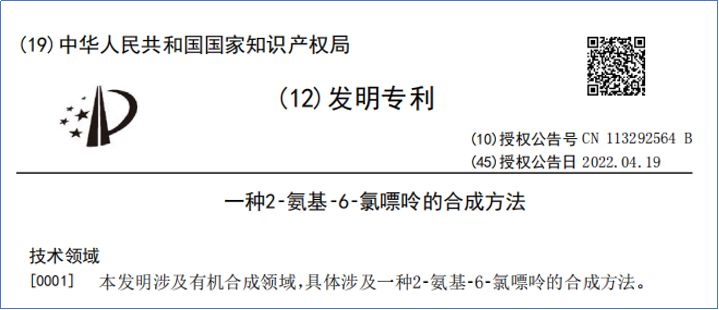
In the development and production of antiviral drugs, some key chemicals play a vital role, and 2-amino-6-chloropurine is one of them. This compound not only has a wide range of applications in the field of chemical synthesis, but is also an indispensable part of the medical field. This article will take you through the basic information, chemical properties, pharmaceutical applications and synthesis methods of 2-amino-6-chloropurine.
Basic information

Chemical properties
The structure of 2-amino-6-chloropurine contains a chlorine atom and an active amino group, which allows it to introduce the purine structural unit into the target drug molecular skeleton through the nucleophilic substitution reaction of the amino group during the structural modification of the drug molecule.
Pharmaceutical applications
2-Amino-6-chloropurine, as an important pharmaceutical intermediate, is mainly used in the synthesis of antiviral drugs, and can be used in the synthesis of anti-cancer, anti-inflammatory and antihypertensive drugs. The following are several major applications of 2-amino-6-chloropurine:
· Antiviral drug synthesis:
▷ Synthesis of Famciclovir, Penciclovir and Valacyclovir: 2-Amino-6-chloropurine is a key intermediate in the synthesis of antiviral drugs and is mainly used in the synthesis of purine antiviral drugs, such as famciclovir, penciclovir and valacyclovir. These medications are primarily used to treat herpes virus infections, especially shingles.
▷ Synthesis of Entecavir: 2-Amino-6-chloropurine is also used in the synthesis of Entecavir, a new generation guanine nucleoside analog oral drug used to treat hepatitis B virus infection.
· Synthesis of nucleoside analogues:
▷ Enzymatic synthesis of 2’-deoxyguanosine: 2-amino-6-chloropurine can be used for the enzymatic synthesis of 2’-deoxyguanosine, a nucleoside analog with antiviral activity.
▷ Synthesis of 9-alkylpurines: It can be used to synthesize 9-alkylpurines, a class of biologically active purine derivatives.
· Synthesis of purine and pyrimidine base derivatives:
(R)-and (S)-N-(2-methoxypropyl phosphate) derivatives: 2-amino-6-chloropurine is also used in the synthesis of purine and pyrimidine bases (R)-and (S)-N-(2-methoxypropyl phosphate) derivatives, which have potential applications in medicinal chemistry.
· Synthetic anticancer drugs
Purine derivatives synthesized from 2-amino-6-chloropurine can be used as anti-cancer, anti-cell proliferation abnormalities and can inhibit leukemia.
· Synthetic anti-inflammatory drugs:
Pyrrolidine monomers and oligomers synthesized from 2-amino-6-chloropurine can treat inflammatory diseases such as enteritis and atopic dermatitis and can also be used as inhibitors of phospholipase A2.
· Synthetic antihypertensive drugs:
The hydrochloride of tyrosine amide, an amino acid derivative synthesized from 2-amino-6-chloropurine, can treat various diseases caused by carrying angiotensin IV, such as being used as a renal or cerebral vasodilators, anti-proliferative agents, etc.
· Basic research in biochemistry:
2-amino-6-chloropurine can be used as the basic raw material for the synthesis of purine derivatives and has certain applications in basic research in biochemistry.
Synthesis method
There are various methods for synthesizing 2-amino-6-chloropurine, including guanine chlorine spray method, direct guanine chlorination method, guanine first amino protection and then chlorination method, pyrimidine derivatives first chlorination and then cyclization method, enzymatic method synthesis method, microwave radiation synthesis method, etc. Each of these synthesis methods has advantages and limitations. Choosing an appropriate synthesis route needs to be determined based on specific production conditions and product quality requirements.
Conclusion
2-Amino-6-chloropurine, as an important pharmaceutical intermediate, plays a key role in the synthesis of antiviral drugs. With the increasing demand for antiviral drugs, the research and application prospects of 2-amino-6-chloropurine are broad. Understanding the properties and synthesis methods of this compound is crucial for professionals in the field of medicinal chemistry.

LinkChem has been deeply involved in the field of small molecule drugs for more than ten years, exploring the synthesis of 2-amino-6-chloropurine and publishing more environmentally friendly invention patents. According to the synthesis method of 2-amino-6-chloropurine involved in the present invention, since hexachloroacetone is used as the chlorinating agent and dichlorosulfoxide is used as the solvent, the nitrogen-containing and phosphorus-containing quantities of the present invention are greatly reduced. The use of reagents accordingly reduces the discharge of nitrogen- and phosphorus-containing wastewater, which is beneficial to large-scale process production.
This article is published by LinkChem Technology Co., Ltd. Welcome to scan the QR code to follow us and explore the mysteries of chemistry together.